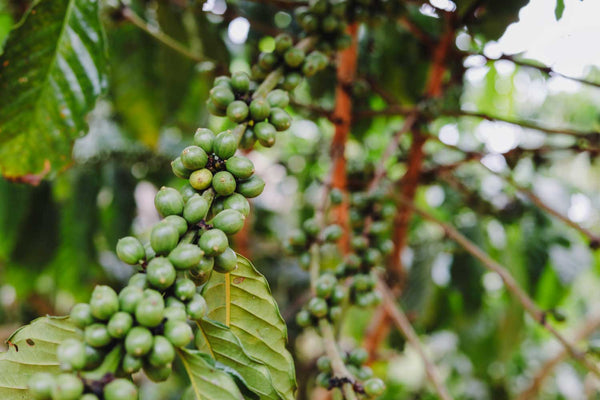
Coffee Production and the Environment: A Look at Sustainability
Introduction: The Global Coffee Industry
The coffee industry produces global revenue in excess of $468.2 billion each year (Statista, 2024). The industry is driven by raw coffee product, the seeds of coffee cherries picked from the coffea plant, which are grown at altitudes between the Tropics of Cancer and Capricorn by countries in Africa, Asia, Central America, and South America. The coffee beans are then processed and exported to countries around the globe, consumed in many nations as often as water (Perkins, 2022). None of the top ten countries for coffee consumption per capita lie in regions where coffee can be grown (World Population Review, 2024). Furthermore, only two of the top ten coffee-importing countries can produce coffee, with China, not known for coffee production, being one of the two (United States Department of Agriculture, 2023). Of the beans grown in coffee-producing nations, more than 90% of raw coffee beans are exported instead of being roasted and consumed domestically. Coffee is clearly a deeply international industry, one that ties the globe together through its most beloved beverage.
Coffee consumption has grown by more than 60% since 1990 and is now the world’s second most traded commodity, on track to triple by mid-century (Varcho, 2015). However, behind the global popularity of coffee and the product’s economic significance lies a complex narrative encompassing a broad spectrum of environmental and social issues. To keep up with rapidly increasing demand, some producers have, “found themselves under pressure to increase production at the expense of the environment and workers. From deforestation to pesticide use… [coffee production] is harm[ing] the planet and exploit[ing] millions of people in some of the poorest parts of the world” (Perkins, 2022). Large international firms increase that pressure by coercing producers to compromise their values or sell their product at untenable prices. Furthermore, the remote nature of coffee production, the often-weak economic performance of coffee-producing nations, and the low accessibility of technology and education to rural smallholders make the damage difficult to address.
While coffee is loved by many, the demand this love produces pushes the industry to unsustainable levels. While this paper can hardly cover every issue within the coffee industry, it aims to explore some of the main environmental and social concerns surrounding coffee production today, as well as some of the possible paths toward a more environmentally friendly and socially equitable coffee industry. The effect of coffee consumption on the environment will follow in a later piece.
Environmental and Social Impact of Coffee Production
Before getting into the environmental impact of coffee production, it is first important to mention that coffee production occurs differently around the world. This paper is written generally to address the environmental impact of the coffee production industry as a whole. Many coffee producers, government programs, importers, roasters, and other industry stakeholders are already taking significant steps to make coffee production environmentally friendly and socially sustainable. A few of them are mentioned toward the end of this piece.
The coffee industry’s impact on the environment primarily revolves around deforestation, soil degradation, water waste and pollution, and biodiversity loss. To meet demand, farmers clear vast plots of land for cultivation, destroying important wildlife habitats and reducing biodiversity. The heavy use of fertilizers and pesticides causes chemical buildup and water pollution. The resulting soil degradation makes the land unusable, leading to severe erosion. For every cup of coffee consumed, almost one square inch of invaluable rainforest is destroyed (Varcho, 2015). Around the world, more than 200,000 acres are cleared each day to make room for agricultural and industrial purposes. But those additional acres may not increase yield. Due to climate change and soil degradation, experts predict that land suitable for coffee production may be reduced by 50% by 2050. In certain areas of the world, that figure may be as great as 88% (Perkins, 2022).
The social issues surrounding coffee are well-documented yet remain an issue for the more than 125 million people worldwide depending on coffee for their livelihoods (Perkins, 2022). The coffee industry is fraught with issues of fair compensation, labor rights abuses, and economic problems that particularly affect small-scale farmers in remote areas. While the coffee trade produces $468.2 billion in revenue annually, only a small percentage makes its way to the producers and their employed labor. Furthermore, the environmental impact of coffee production lowers yields and quality while increasing uncertainty for these farmers and workers. A vast majority of the 25 million smallholder farmers producing 80% of the world’s crop struggle to earn a reliable living, and “more than one-fifth live in extreme poverty” (Perkins, 2022). These conditions sometimes press smallholders or pickers to rely on children to help them meet the punishing demands of the industry.
Paths Forward
Thankfully, the meteoric global rise of specialty coffee has created trends pushing against the historically negative environmental and social practices of the coffee industry. Governments, producers, exporters, importers, roasters, and consumers are increasingly joining forces to launch initiatives addressing sustainability and the industry’s social practices. Government organizations like the Guatemalan National Coffee Association (Anacafe) are working to, “achieve a sustainable and competitive coffee industry,” by, “promot[ing] the national product, which is renowned and valued by the most demanding markets around the world.” On their website, GuatemalanCoffees.com, Anacafe pledges to support the United Nations Sustainable Development Goals and use the coffee sector as a force for good, “creating a positive impact for people, the economy, and the planet.” Private organizations like Costa Rica’s Farmers’ Project Specialty Coffee are committing themselves to, “help local farmers in Costa Rica sell their coffee for a fair price to support their workers, their farms, and their families.” Farmers Project was founded by producers Jonathan Jost and Marianella Baez Jost of Café Con Amor after witnessing, “how hard local farmers worked, only to sell their coffee for prices that could not sustain the most basic lifestyle.” They connect smallhold farmers to direct trade partners around the world.
While there are many global efforts to create sustainability along the coffee supply chain, there is still much more that could be done. Producers can begin growing a greater percentage of Arabica coffee and employ greater shade-growing cultivation techniques. The growth of the specialty coffee industry has exponentially increased the demand for high-grade Arabica beans selling at a more sustainable premium. Instead of producing the sun and pesticide-hungry Robusta beans at the heart of deforestation, producers can opt to grow Arabica varieties that need the shade of native trees. The Smithsonian Migratory Bird Center states that, “shade-grown coffee plantations are the next best thing to a natural forest.”
Coffee importers and roasters can forge long-term relationships with producers to help support their environmentally friendly cultivation techniques and help introduce innovative practices to smallholders without reliable access to technology. The subsequent rise in quality and consistency resulting from these types of mutually beneficial relationships contrasts significantly with the historically predatory relationships pressing smallholders into unsustainable practices. Government programs can also help reduce the negative environmental and social impacts of the coffee industry by supporting local smallholders and enacting policies requiring environmental improvement for trade. By developing sustainable coffee systems, the coffee industry can, “provide several ecological services, such as maintaining soil fertility, biodiversity, and carbon sequestration, and regulating pests and diseases” (Bilen, et al., 2022).
Learn More:
Anacafe. (2024, March 24). Guatemalan Coffees. Retrieved from Guatemalan Coffees: https://www.guatemalancoffees.com
Bilen, C., El Chami, D., Mereu, V., Trabucco, A., Marras, S., & Spano, D. (2022). A Systematic Review on the Impacts of Climate Change on Coffee Agrosystems . National Library of Medicine.
Farmers' Project Specialty Coffee. (2024). Farmers' Project Specialty Coffee. Retrieved from Farmers Helping Farmers: https://www.farmersproject-cr.com
Perkins, C. (2022, July 27). Wonder about the impact of your daily cup of coffee on the planet? Here’s the bitter truth. Retrieved from IDEAS.TED.COM: https://ideas.ted.com/truth-about-coffee-impact-on-environment-planet/
Statista. (2024, March 1). Coffee - Worldwide. Retrieved from Statista: https://www.statista.com/outlook/cmo/hot-drinks/coffee/worldwide
United States Department of Agriculture. (2023, December). Coffee: World Markets and Trade. Retrieved from World Agricultural Outlook: https://apps.fas.usda.gov/psdonline/circulars/coffee.pdf
Varcho, A. (2015). A Bitter Brew - Coffee Production, Deforestation, Soil Erosion and Water Contamination. Retrieved from The Ohio State University Pressbooks: https://ohiostate.pressbooks.pub/sciencebites/chapter/a-bitter-brew-coffee-production-deforestation-soil-erosion-and-water-contamination/
Wild, J., & Wild, K. (2023). International Business. Hoboken, NJ: Pearson Education, Inc.
World Population Review. (2024). Coffee Consumption by Country 2024. Retrieved from World Population Review: https://worldpopulationreview.com/country-rankings/coffee-consumption-by-country

